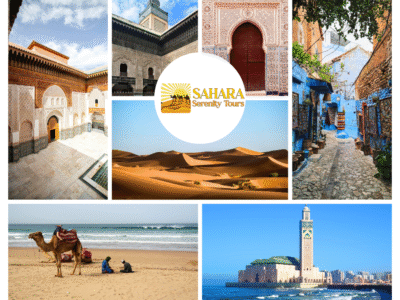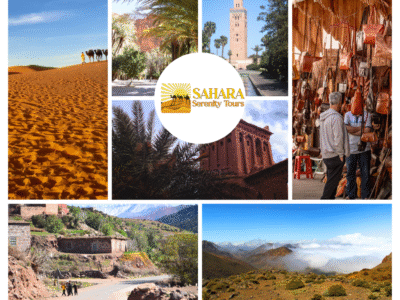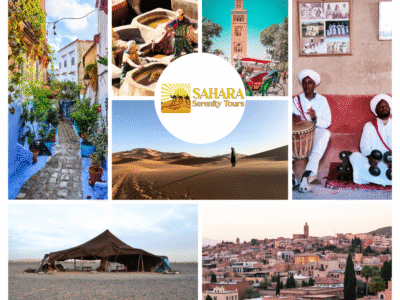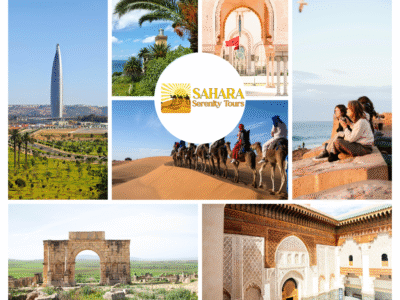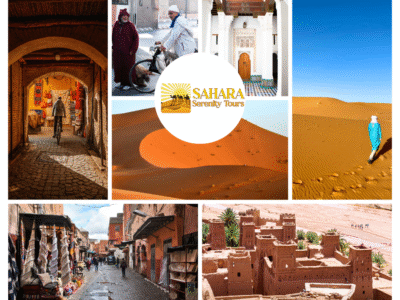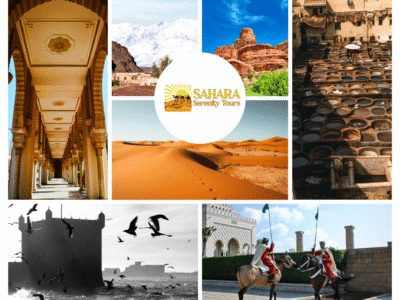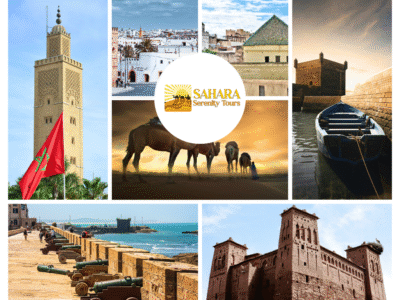Planning a trip to Morocco’s vibrant souks, desert dunes, or coastal gems like Essaouira? If you hold a Schengen visa, you might be wondering whether it allows entry into Morocco. The straightforward answer is no, a Schengen visa does not permit direct entry to Morocco, as Morocco is not part of the Schengen Area. However, for many travelers, a valid Schengen visa can qualify you for Morocco’s convenient e-Visa, simplifying the entry process. This original guide, crafted for 2025 travelers, explains which countries can leverage a Schengen visa for Morocco’s e-Visa, lists visa-exempt countries, details the application process, and shares practical tips for a seamless Moroccan adventure.
Morocco’s Visa Rules: The Basics
Morocco’s visa policy is nationality-based. Citizens of over 70 countries can enter visa-free for up to 90 days for tourism or business, requiring only a passport valid for at least three months from the departure date. For others, a visa is required, and a Schengen visa can make you eligible for Morocco’s e-Visa without needing to visit an embassy.
Countries That Don’t Need a Visa for Morocco
Citizens of these countries can enter Morocco visa-free for up to 90 days:
- Europe: All Schengen Area countries (Austria, Belgium, Bulgaria, Croatia, Cyprus, Czech Republic, Denmark, Estonia, Finland, France, Germany, Greece, Hungary, Iceland, Italy, Latvia, Liechtenstein, Lithuania, Luxembourg, Malta, Netherlands, Norway, Poland, Portugal, Romania, Slovakia, Slovenia, Spain, Sweden, Switzerland), United Kingdom, Ireland, Andorra, Monaco, San Marino, Vatican City.
- Americas: United States, Canada, Argentina, Brazil, Chile, Colombia, Costa Rica, Dominican Republic, Mexico, Peru, Uruguay, Venezuela.
- Asia: China (including Hong Kong and Macau), Indonesia, Japan, Malaysia, Philippines, Singapore, South Korea, Thailand.
- Oceania: Australia, New Zealand.
- Africa: Algeria, Côte d’Ivoire, Gabon, Guinea, Mali, Niger, Senegal, Tunisia.
- Middle East: Bahrain, Kuwait, Oman, Qatar, Saudi Arabia, United Arab Emirates.
- Other: Russia, Turkey.
Note: This list is accurate as of September 2025 but may change. Verify with Morocco’s official visa portal or embassy.
Countries Eligible for Morocco’s e-Visa with a Schengen Visa
If your country is not on the visa-exempt list above, you may still qualify for Morocco’s e-Visa if you hold a valid multiple-entry Schengen visa. This applies to citizens of most non-exempt countries, except for a few (e.g., Syria, Yemen, Sudan) that must apply for a traditional visa at a Moroccan embassy. Examples of countries whose citizens can use a Schengen visa to apply for Morocco’s e-Visa include:
- Africa: Nigeria, South Africa, Kenya, Ghana, Ethiopia, Morocco, and many others.
- Asia: India, Pakistan, Bangladesh, Sri Lanka, Vietnam, Nepal, and more.
- Middle East: Lebanon, Iraq, Jordan (if not eligible for standard e-Visa).
- Americas: Bolivia, Ecuador, Guatemala (if not eligible for standard e-Visa).
- Other: Ukraine, Georgia, Armenia, and various non-exempt nations.
Important: The Schengen visa must be a multiple-entry sticker visa (not electronic) valid for at least 90 days from the e-Visa application date. Alternatively, a residence permit from a Schengen country (valid for 180 days) or a multiple-entry visa/permit from the US, UK, Canada, Australia, New Zealand, Ireland, Japan, or Norway also qualifies.
Schengen Visa and Morocco: Key Points
- No Direct Entry: A Schengen visa cannot be used instead of a Moroccan visa at the border.
- E-Visa Eligibility: A valid multiple-entry Schengen visa qualifies non-exempt nationalities for Morocco’s e-Visa, even without Schengen residency.
- Visa-Exempt Nationalities: If you’re from a visa-exempt country (listed above), enter with your passport—no visa or e-Visa needed.
- Special Cases: Some nationalities (e.g., India, Thailand, Israel) qualify for a standard e-Visa without a Schengen visa. Others (e.g., Syria, Yemen) must apply at an embassy.
Who Can Apply for Morocco’s e-Visa with a Schengen Visa?
Since July 2022, Morocco’s e-Visa system has streamlined entry for non-exempt nationalities. There are two e-Visa types:
- Standard e-Visa: For specific countries like India, Jordan, or Guatemala—no Schengen visa required.
- Conditional e-Visa: For most other non-exempt nationalities with:
- A multiple-entry visa (valid for 90+ days) from the Schengen Area, US, UK, Canada, Australia, New Zealand, Ireland, Japan, or Norway.
- A residence permit (valid for 180+ days) from these regions.
Key Details:
- The Schengen visa must be a physical sticker in your passport.
- Diplomatic or special passports don’t qualify for e-Visas; apply at an embassy.
- The e-Visa allows a single entry for up to 30 days (tourism, business, or family visits) and is valid for 180 days from issuance.
If you don’t meet these conditions, apply for a traditional visa at a Moroccan consulate.
What You’ll Need to Apply for the e-Visa
To apply for Morocco’s e-Visa with a Schengen visa, prepare:
- Passport: Valid for 90+ days from entry, with two blank pages.
- Schengen Visa Copy: A clear scan of your multiple-entry Schengen visa.
- Passport Photo: Recent, white background, passport-sized.
- Accommodation Proof: Hotel booking or invitation letter from a Moroccan host.
- Travel Itinerary: Return or onward flight tickets.
- Email: For e-Visa delivery.
- Payment: Card for the fee (around 770 MAD/~$77 USD for standard processing; express is pricier).
Border officials may request proof of funds or travel insurance upon arrival, though these aren’t required for the application.
Step-by-Step: Applying for Morocco’s e-Visa
The e-Visa application is fully online via Morocco’s official portal (acces-maroc.ma). Here’s how:
- Check Eligibility: Use the portal’s tool to confirm if your nationality and Schengen visa qualify.
- Fill Out the Form: Enter personal info, passport details, travel plans, and upload documents (including Schengen visa).
- Pay the Fee: Choose standard (3 days) or express (1 day) processing.
- Submit Application: Receive a confirmation email and track status online.
- Download e-Visa: Print the approved PDF to present at the border with your passport and Schengen visa.
Processing takes 1-3 days, but apply 7+ days before travel to be safe. Errors in your application can lead to rejection.
Arriving in Morocco: What to Expect
At entry points (e.g., airports in Marrakech, Casablanca, Fez):
- Show your printed e-Visa, passport, and Schengen visa (if applicable).
- Answer questions about your trip.
- Provide accommodation proof or return ticket if requested.
- For stays over 90 days, apply for a residence permit locally.
Note: An Electronic Travel Authorization (AEVM) may apply to some visa-exempt nationalities in the future, but as of September 2025, it’s limited to countries like Mali.
Morocco Travel FAQs: Visa, Entry, and Practical Tips for 2025
Planning a trip to Morocco’s vibrant souks, stunning deserts, or coastal cities like Essaouira? This comprehensive FAQ guide answers the most common questions about entering Morocco, visa requirements, and travel tips, optimized for 2025 travelers. Whether you’re wondering about using a Schengen visa, UK BRP, or traveling with an Indian passport, we’ve got you covered with clear, concise answers to help you plan a seamless Moroccan adventure.
FAQs on Morocco Visa and Entry Requirements
Can I Visit Morocco with a UK BRP?
No, a UK Biometric Residence Permit (BRP) alone does not allow direct entry to Morocco, as it is not a visa or a substitute for one. However, if your nationality requires a visa for Morocco (e.g., India, Nigeria), a UK BRP valid for at least 180 days from the date of your e-Visa application can make you eligible for Morocco’s e-Visa. You’ll need to apply online at acces-maroc.ma, providing your BRP, passport (valid for 90+ days from entry), a photo, accommodation proof, and flight itinerary. If your country is visa-exempt (e.g., UK, US), you don’t need a visa—just a passport.
Can I Enter Morocco with a Schengen Visa?
No, a Schengen visa does not permit direct entry to Morocco, as Morocco is not part of the Schengen Area. However, a valid multiple-entry Schengen visa (sticker in passport, valid for 90+ days from application) qualifies citizens of non-visa-exempt countries (e.g., India, Nigeria, Pakistan) for Morocco’s e-Visa. Apply online with your passport, Schengen visa copy, photo, accommodation, and flight details. Visa-exempt nationalities (e.g., France, Germany) can enter with just a passport for up to 90 days.
Can I Visit Morocco with an EU Residence Permit?
No, an EU residence permit alone does not grant entry to Morocco. However, if your nationality requires a visa, an EU residence permit (valid for 180+ days from application) from a Schengen country can make you eligible for Morocco’s e-Visa. Submit your application online with your permit, passport, photo, accommodation proof, and travel itinerary. Visa-exempt nationalities (e.g., all Schengen countries, UK, US) need only a passport valid for 90+ days from departure.
Can I Go to Morocco Without a Visa?
Yes, citizens of over 70 countries can enter Morocco visa-free for up to 90 days for tourism or business. These include:
- Europe: All Schengen countries (e.g., France, Germany, Italy, Spain), UK, Ireland, Andorra, Monaco.
- Americas: US, Canada, Argentina, Brazil, Chile, Mexico.
- Asia: China, Japan, South Korea, Thailand, Singapore.
- Oceania: Australia, New Zealand.
- Africa: Algeria, Tunisia, Senegal, Mali.
- Middle East: UAE, Saudi Arabia, Qatar.
- Other: Russia, Turkey.
Check the full list on Morocco’s official visa portal. You need a passport valid for 90+ days from departure. Non-exempt nationalities (e.g., India, Nigeria) require a visa or e-Visa.
Can I Get a Morocco Visa on Arrival?
No, Morocco does not offer visas on arrival for any nationality. If you require a visa, you must apply for an e-Visa online (acces-maroc.ma) or a traditional visa at a Moroccan embassy before travel. Visa-exempt nationalities (listed above) can enter with a valid passport. Always apply in advance to avoid issues at the border.
Can I Enter Morocco with a US Visa?
No, a US visa does not allow direct entry to Morocco. However, a valid multiple-entry US visa (valid for 90+ days from application) qualifies citizens of non-visa-exempt countries for Morocco’s e-Visa. Apply online with your passport, US visa copy, photo, accommodation, and flight details. US citizens are visa-exempt and can enter with a passport valid for 90+ days for up to 90 days.
Can I Visit Morocco with a UK Visa?
No, a UK visa does not permit direct entry to Morocco. However, a multiple-entry UK visa (valid for 90+ days from application) can make you eligible for Morocco’s e-Visa if your nationality requires a visa. Apply online with your passport, UK visa copy, photo, accommodation proof, and itinerary. UK citizens are visa-exempt and need only a passport for up to 90 days.
Can I Visit Morocco?
Yes, most travelers can visit Morocco for tourism, business, or family visits. Visa-exempt nationalities (e.g., US, UK, Schengen countries) can stay up to 90 days with a valid passport. Others may need an e-Visa (apply at acces-maroc.ma) if they hold a multiple-entry visa or residence permit from the Schengen Area, US, UK, Canada, Australia, etc., or a traditional visa from an embassy. Check your eligibility based on your nationality and plan ahead.
Can I Visit Morocco with an Indian Passport?
Indian passport holders require a visa to enter Morocco. However, India is eligible for Morocco’s standard e-Visa without needing a Schengen, US, or UK visa. Apply online at acces-maroc.ma with your passport (valid for 90+ days), a photo, accommodation proof, and flight itinerary. The e-Visa allows a 30-day stay (single entry) and is valid for 180 days from issuance. Processing takes 1-3 days, and the fee is around 770 MAD (~$77 USD).
Can I Travel to Morocco with a Travel Document?
It depends on the type of travel document and your nationality. Refugee or stateless travel documents may not be eligible for Morocco’s e-Visa, and you’ll likely need to apply for a traditional visa at a Moroccan embassy. Provide your travel document (valid for 90+ days), a photo, accommodation proof, and itinerary. Visa-exempt nationalities can use their travel document if it’s accepted as a passport equivalent—check with the embassy. Always confirm eligibility before travel.
FAQs on Practical Travel Tips
Can I See Morocco from Spain?
Yes, you can see Morocco from Spain’s southern coast, particularly from Tarifa or Algeciras, where Morocco’s coastline (e.g., Tangier) is visible across the Strait of Gibraltar on clear days. Ferries from Tarifa or Algeciras to Tangier take about 1 hour, making day trips or longer visits easy. Visa-exempt nationalities (e.g., Spain, UK) need only a passport; others may need an e-Visa or embassy visa. Book ferry tickets in advance for smoother travel.
Can I Drink Morocco’s Tap Water?
No, it’s not recommended to drink tap water in Morocco due to potential bacterial contamination, especially for travelers. Stick to bottled water, widely available and affordable (around 5-10 MAD per liter). Boiled water or water treated with purification tablets is also safe. Avoid ice in drinks unless you’re sure it’s made from purified water. For sustainability, consider a reusable bottle with a built-in filter.
Can I Apply for a Morocco Visa Online?
Yes, Morocco offers an e-Visa for eligible nationalities through the official portal (acces-maroc.ma). You’ll need:
- A passport valid for 90+ days from entry.
- A multiple-entry visa/permit (if required) from the Schengen Area, US, UK, etc., valid for 90+/180+ days.
- A recent passport photo, accommodation proof, and flight itinerary.
- Payment for the fee (~770 MAD/$77 USD for standard processing).
Processing takes 1-3 days (standard) or 1 day (express). Print the approved e-Visa for border entry. Ineligible nationalities must apply at an embassy.
Can I Drink Morocco’s Water?
As mentioned, tap water in Morocco is not safe for drinking due to potential health risks. Always opt for bottled water or purified water for drinking, brushing teeth, or cooking. Most hotels, restaurants, and shops offer bottled water. If you’re in rural areas, carry enough bottled water or use purification methods. Check that bottle seals are intact to avoid counterfeit water.
Pro Tips for Your Moroccan Journey
- Best Time to Visit: Spring (March-May) or fall (September-November) for mild weather.
- Budget: Plan $50-100 USD daily. Use Moroccan dirhams (MAD); ATMs are common.
- Health: No mandatory vaccines, but hepatitis A and typhoid shots are advised. Carry hand sanitizer.
- Culture: Dress modestly, especially at religious sites. Bargaining is expected in markets.
- Transport: Fly into Casablanca, Marrakech, or Fez, or take ferries from Spain. Use ride-hailing apps like Careem.
For unique cases (e.g., dual citizenship, special travel documents), contact a Moroccan embassy or check acces-maroc.ma. Morocco’s rich culture, stunning landscapes, and warm hospitality await—plan smart and enjoy!
This guide is current as of September 2025. Verify visa policies with official sources before traveling.
Can EU citizens enter Morocco with an ID card?
No, a passport is required, even for visa-exempt EU citizens.
Must my Schengen visa be valid during my Morocco trip?
It needs to be valid when applying for the e-Visa, but not necessarily during your stay. Check the e-Visa portal for specifics.
Can I extend my e-Visa stay?
Yes, apply for a 30-day extension at a local police station. Overstaying without approval risks fines or bans.
Do children need their own e-Visa?
Yes, all travelers, including minors, need an individual e-Visa if their nationality isn’t visa-exempt.
What if my e-Visa is rejected?
Reapply with corrected details or contact a Moroccan embassy for a sticker visa.
Pro Tips for Your Moroccan Journey
- Best Time to Visit: Spring (March-May) or fall (September-November) for mild weather.
- Budget: Plan for $50-100 USD daily. Use Moroccan dirhams (MAD); ATMs are widely available.
- Health Tips: No mandatory vaccines, but consider hepatitis A and typhoid. Drink bottled water.
- Cultural Notes: Dress modestly, especially at religious sites. Bargaining is common in markets.
- Getting Around: Fly into major cities or take ferries from Spain. Use apps like Careem for rides.
For unique cases (e.g., dual citizenship, extended stays), consult a Moroccan embassy or the e-Visa portal. Morocco’s colorful medinas, majestic Atlas Mountains, and warm hospitality await—plan smart and enjoy!
This guide is current as of September 2025. Always verify visa policies with official sources before traveling.




